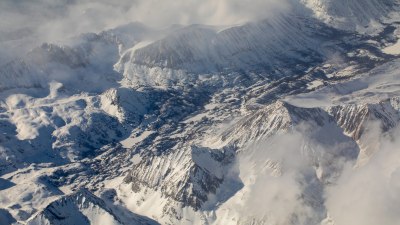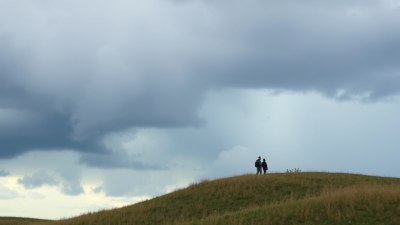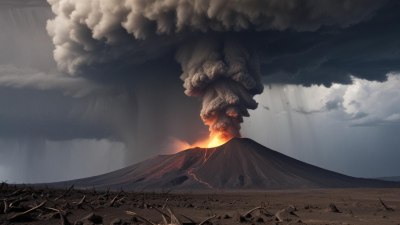How High-Altitude Winds Affect Climate
Explore the impact of high-altitude winds on global climate patterns and weather systems.

High-altitude winds, often referred to as jet streams, are powerful air currents that flow at the upper levels of the atmosphere. These winds play a crucial role in shaping global weather patterns and have a significant impact on climate. Understanding how high-altitude winds function is essential for grasping their influence on various climatic phenomena.
What Are High-Altitude Winds?
High-altitude winds are winds that occur at altitudes of approximately 6 to 12 miles above the Earth's surface. These winds are typically found in the troposphere, the lowest region of the Earth's atmosphere. The most well-known of these winds are the polar jet streams and subtropical jet streams, which flow from west to east and influence weather patterns across the globe.
The Formation of Jet Streams
Jet streams form due to the uneven heating of the Earth's surface by the sun. The equator receives more direct sunlight, causing warm air to rise and create areas of low pressure, while the poles receive less direct sunlight, leading to colder air and high-pressure systems. The contrast between these temperature and pressure systems creates the high-altitude winds we observe.
As air moves from areas of high pressure to areas of low pressure, it accelerates, resulting in fast-moving air currents. The Coriolis effect, caused by the Earth's rotation, also plays a significant role in the direction and strength of these winds. This phenomenon results in the deflection of high-altitude winds, causing them to blow from west to east in the Northern Hemisphere.
Impact on Weather Patterns
High-altitude winds act as a steering mechanism for weather systems. They influence the paths of storm systems and the distribution of precipitation across different regions. For example, when jet streams dip southward, they can bring cold air and precipitation to lower latitudes, resulting in increased storm activity and cooler temperatures.
Conversely, when jet streams push northward, they allow warmer air to move into areas typically characterized by colder climates. This can result in heatwaves and reduced precipitation, affecting agriculture and water supplies.
High-Altitude Winds and Climate Change
As climate change continues to affect the planet, the behavior of high-altitude winds is also changing. Research indicates that these winds may be becoming more variable and shifting in response to rising temperatures. For instance, warmer Arctic temperatures can lead to slower and more erratic jet streams, which can intensify extreme weather events like hurricanes, heatwaves, and heavy rainfall.
The changing patterns of high-altitude winds are also affecting seasonal weather patterns. For instance, changes in jet stream behavior can lead to longer droughts or prolonged wet periods in some regions, impacting ecosystems and human activities.
Global Climate Implications
The implications of high-altitude winds on global climate are profound. Changes in these winds can have cascading effects on local and global climates, influencing everything from agriculture to biodiversity. For example, regions that depend heavily on predictable seasonal weather patterns—such as monsoon areas—may face significant challenges as high-altitude winds change their normal patterns.
Additionally, the labeling of certain areas as more prone to extreme weather can shift, leading to new vulnerabilities in regions previously considered safe. Understanding these dynamics is crucial for developing strategies for adaptation and resilience in the face of climate change.
Forecasting Weather and Climate
Forecasting weather and climate requires an understanding of high-altitude winds. Meteorologists analyze jet streams to predict the movement of weather patterns and severe weather events. Advanced satellite technology and computer models allow scientists to monitor and analyze these winds, improving the accuracy of weather forecasts.
As our understanding of high-altitude winds improves, so too does our ability to predict long-term climate changes. This information is vital for planners, policy-makers, and communities as they navigate the complexities of climate adaptation.
Mitigation Strategies
Given the critical impact of high-altitude winds on climate and weather patterns, it is essential to develop effective mitigation strategies for climate change. Reducing greenhouse gas emissions can help stabilize global temperatures and may lead to a more predictable behavior of high-altitude winds. This requires global cooperation and commitment to sustainable practices across all sectors of society.
Investment in renewable energy, carbon capture technology, and sustainable agriculture are just some of the ways to combat climate change. Additionally, enhancing the resilience of infrastructure and communities to increasing extreme weather events is vital in minimizing the impacts of changing high-altitude winds.
In conclusion, high-altitude winds are a key factor in determining global and regional climate patterns. Their influence on weather systems is profound, affecting everything from temperature and precipitation patterns to extreme weather events. As climate change continues to alter these winds, understanding their behavior becomes increasingly important in mitigating its impacts. By addressing the challenges posed by changing high-altitude winds, society can better prepare for future climatic shifts and work towards a more sustainable and resilient world.











